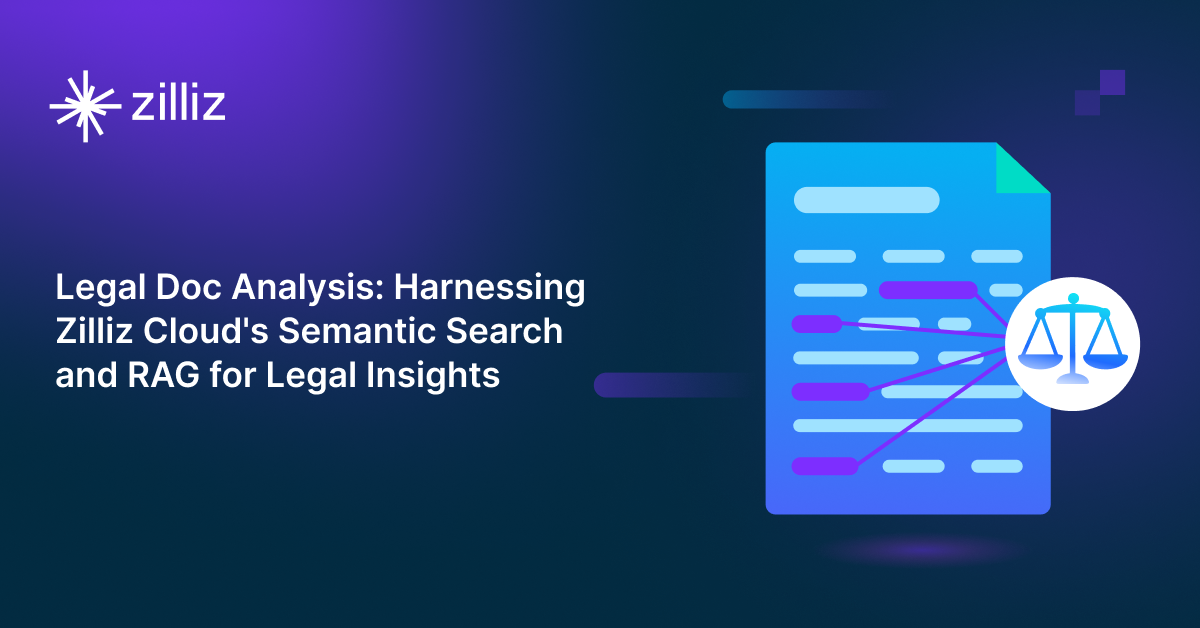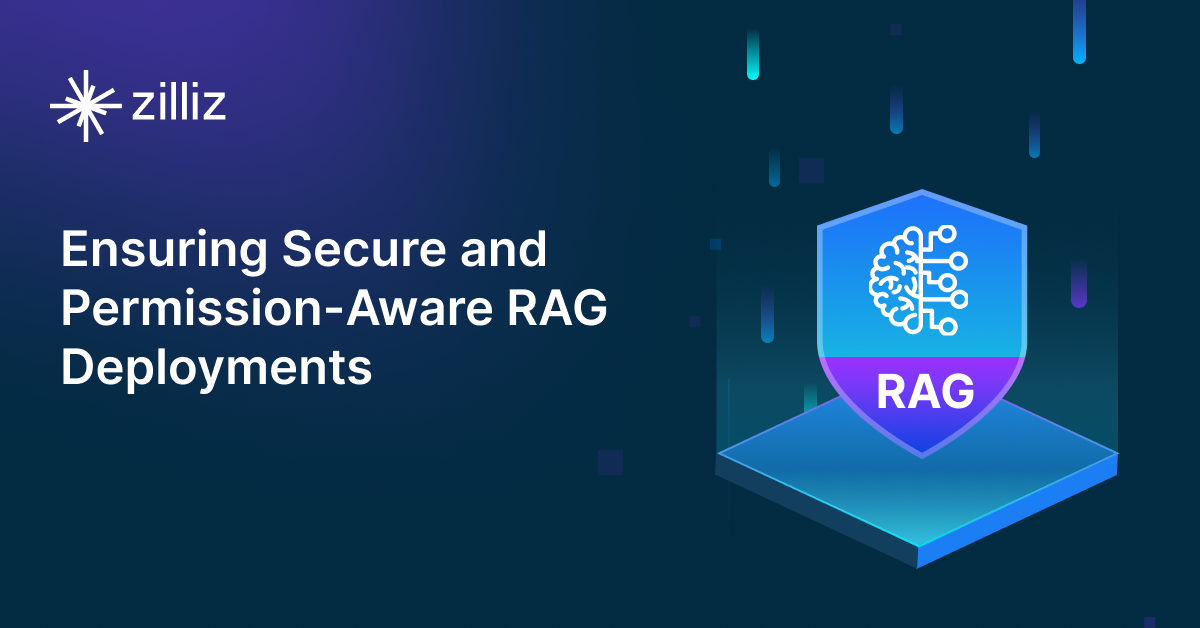Build RAG Chatbot with Llamaindex, Zilliz Cloud, Databricks DBRX, and voyage-3-lite
Introduction to RAG
Retrieval-Augmented Generation (RAG) is a game-changer for GenAI applications, especially in conversational AI. It combines the power of pre-trained large language models (LLMs) like OpenAI’s GPT with external knowledge sources stored in vector databases such as Milvus and Zilliz Cloud, allowing for more accurate, contextually relevant, and up-to-date response generation. A RAG pipeline usually consists of four basic components: a vector database, an embedding model, an LLM, and a framework.
Key Components We'll Use for This RAG Chatbot
This tutorial shows you how to build a simple RAG chatbot in Python using the following components:
- Llamaindex: a data framework that connects large language models (LLMs) with various data sources, enabling efficient retrieval-augmented generation (RAG). It helps structure, index, and query private or external data, optimizing LLM applications for search, chatbots, and analytics.
- Zilliz Cloud: a fully managed vector database-as-a-service platform built on top of the open-source Milvus, designed to handle high-performance vector data processing at scale. It enables organizations to efficiently store, search, and analyze large volumes of unstructured data, such as text, images, or audio, by leveraging advanced vector search technology. It offers a free tier supporting up to 1 million vectors.
- Databricks DBRX: DBRX is a transformer-based decoder-only large language model (LLM) that was trained using next-token prediction. It uses a fine-grained mixture-of-experts (MoE) architecture with 132B total parameters of which 36B parameters are active on any input. It was pre-trained on 12T tokens of text and code data.
- Voyage-3-Lite: This model is designed for resource-constrained environments, offering a lightweight and efficient solution for various NLP tasks. It excels in applications such as chatbots, content generation, and real-time text analysis, providing quick responses while maintaining a balance between performance and computational efficiency. Ideal for developers needing high throughput with limited resources.
By the end of this tutorial, you’ll have a functional chatbot capable of answering questions based on a custom knowledge base.
Note: Since we may use proprietary models in our tutorials, make sure you have the required API key beforehand.
Step 1: Install and Set Up Llamaindex
pip install llama-index
Step 2: Install and Set Up Databricks DBRX
% pip install llama-index-llms-databricks
from llama_index.llms.databricks import Databricks
llm = Databricks(
model="databricks-dbrx-instruct",
api_key="your_api_key",
api_base="https://[your-work-space].cloud.databricks.com/serving-endpoints/",
)
Step 3: Install and Set Up voyage-3-lite
%pip install llama-index-embeddings-voyageai
from llama_index.embeddings.voyageai import VoyageEmbedding
embed_model = VoyageEmbedding(
voyage_api_key="",
model_name="voyage-3-lite",
)
Step 4: Install and Set Up Zilliz Cloud
pip install llama-index-vector-stores-milvus
from llama_index.core import VectorStoreIndex, StorageContext
from llama_index.vector_stores.milvus import MilvusVectorStore
vector_store = MilvusVectorStore(
uri=ZILLIZ_CLOUD_URI,
token=ZILLIZ_CLOUD_TOKEN,
dim=1536, # You can replace it with your embedding model's dimension.
overwrite=True,
)
Step 5: Build a RAG Chatbot
Now that you’ve set up all components, let’s start to build a simple chatbot. We’ll use the Milvus introduction doc as a private knowledge base. You can replace it with your own dataset to customize your RAG chatbot.
import requests
from llama_index.core import SimpleDirectoryReader
# load documents
url = 'https://raw.githubusercontent.com/milvus-io/milvus-docs/refs/heads/v2.5.x/site/en/about/overview.md'
example_file = 'example_file.md' # You can replace it with your own file paths.
response = requests.get(url)
with open(example_file, 'wb') as f:
f.write(response.content)
documents = SimpleDirectoryReader(
input_files=[example_file]
).load_data()
print("Document ID:", documents[0].doc_id)
storage_context = StorageContext.from_defaults(vector_store=vector_store)
index = VectorStoreIndex.from_documents(
documents, storage_context=storage_context, embed_model=embed_model
)
query_engine = index.as_query_engine(llm=llm)
res = query_engine.query("What is Milvus?") # You can replace it with your own question.
print(res)
Example output
Milvus is a high-performance, highly scalable vector database designed to operate efficiently across various environments, from personal laptops to large-scale distributed systems. It is available as both open-source software and a cloud service. Milvus excels in managing unstructured data by converting it into numerical vectors through embeddings, which facilitates fast and scalable searches and analytics. The database supports a wide range of data types and offers robust data modeling capabilities, allowing users to organize their data effectively. Additionally, Milvus provides multiple deployment options, including a lightweight version for quick prototyping and a distributed version for handling massive data scales.
Optimization Tips
As you build your RAG system, optimization is key to ensuring peak performance and efficiency. While setting up the components is an essential first step, fine-tuning each one will help you create a solution that works even better and scales seamlessly. In this section, we’ll share some practical tips for optimizing all these components, giving you the edge to build smarter, faster, and more responsive RAG applications.
LlamaIndex optimization tips
To optimize LlamaIndex for a Retrieval-Augmented Generation (RAG) setup, structure your data efficiently using hierarchical indices like tree-based or keyword-table indices for faster retrieval. Use embeddings that align with your use case to improve search relevance. Fine-tune chunk sizes to balance context length and retrieval precision. Enable caching for frequently accessed queries to enhance performance. Optimize metadata filtering to reduce unnecessary search space and improve speed. If using vector databases, ensure indexing strategies align with your query patterns. Implement async processing to handle large-scale document ingestion efficiently. Regularly monitor query performance and adjust indexing parameters as needed for optimal results.
Zilliz Cloud optimization tips
Optimizing Zilliz Cloud for a RAG system involves efficient index selection, query tuning, and resource management. Use Hierarchical Navigable Small World (HNSW) indexing for high-speed, approximate nearest neighbor search while balancing recall and efficiency. Fine-tune ef_construction and M parameters based on your dataset size and query workload to optimize search accuracy and latency. Enable dynamic scaling to handle fluctuating workloads efficiently, ensuring smooth performance under varying query loads. Implement data partitioning to improve retrieval speed by grouping related data, reducing unnecessary comparisons. Regularly update and optimize embeddings to keep results relevant, particularly when dealing with evolving datasets. Use hybrid search techniques, such as combining vector and keyword search, to improve response quality. Monitor system metrics in Zilliz Cloud’s dashboard and adjust configurations accordingly to maintain low-latency, high-throughput performance.
Databricks DBRX optimization tips
To optimize Databricks DBRX in a Retrieval-Augmented Generation (RAG) setup, focus on efficiently integrating DBRX with your vector store for seamless retrieval and real-time document processing. Leverage the platform’s scalability by partitioning large datasets and using optimized cluster configurations to handle intensive tasks. Ensure your embeddings are stored in the most efficient format, and use indexing techniques like HNSW or IVF for faster retrieval. Optimize Spark jobs by fine-tuning resource allocation, minimizing shuffle operations, and utilizing caching to reduce query latency. Finally, monitor and adjust the job execution plan to avoid unnecessary overhead, ensuring optimal performance while maintaining cost efficiency.
voyage-3-lite optimization tips
voyage-3-lite is optimized for speed and efficiency, making it a strong choice for low-latency RAG applications. Improve retrieval by minimizing the number of retrieved documents while maintaining relevance using adaptive filtering techniques. Keep prompts concise and to the point, avoiding redundant context to reduce processing overhead. Set temperature between 0.1 and 0.2 to prioritize factual accuracy and prevent unnecessary response variation. Use caching to reduce repeated API calls for common queries. Implement response streaming to improve user experience in real-time applications. Optimize resource usage by running voyage-3-lite in high-throughput scenarios where speed is prioritized over deep reasoning, reserving larger models for more complex analysis.
By implementing these tips across your components, you'll be able to enhance the performance and functionality of your RAG system, ensuring it’s optimized for both speed and accuracy. Keep testing, iterating, and refining your setup to stay ahead in the ever-evolving world of AI development.
RAG Cost Calculator: A Free Tool to Calculate Your Cost in Seconds
Estimating the cost of a Retrieval-Augmented Generation (RAG) pipeline involves analyzing expenses across vector storage, compute resources, and API usage. Key cost drivers include vector database queries, embedding generation, and LLM inference.
RAG Cost Calculator is a free tool that quickly estimates the cost of building a RAG pipeline, including chunking, embedding, vector storage/search, and LLM generation. It also helps you identify cost-saving opportunities and achieve up to 10x cost reduction on vector databases with the serverless option.
 Calculate your RAG cost
Calculate your RAG cost
What Have You Learned?
Congratulations on making it through the tutorial! You've just unlocked the secrets to integrating a powerful framework, a vector database, a robust LLM, and an embedding model to create a remarkable Retrieval-Augmented Generation (RAG) system. You've learned how LlamaIndex serves as an efficient framework to streamline your workflow, while Zilliz Cloud provides a fast and scalable vector database capable of handling your data with ease. The use of Databricks DBRX has been pivotal in managing and optimizing your data processing, while the voyage-3-lite allows for high-quality language generation that enhances your user interaction.
But that's not all! The tutorial has also provided you with nifty optimization tips to ensure your RAG system is running at its best, and a free RAG cost calculator to keep your budgeting just as efficient as your tech. Think about the incredible possibilities that lie ahead as you start experimenting, building, and enhancing your applications with these tools. Remember, innovation is only a step away, and the skills you’ve gained here can lead you to create something truly groundbreaking. Now's the time to roll up your sleeves, dive into your projects, and make your RAG vision a reality. You've got this!
Further Resources
🌟 In addition to this RAG tutorial, unleash your full potential with these incredible resources to level up your RAG skills.
- How to Build a Multimodal RAG | Documentation
- How to Enhance the Performance of Your RAG Pipeline
- Graph RAG with Milvus | Documentation
- How to Evaluate RAG Applications - Zilliz Learn
- Generative AI Resource Hub | Zilliz
We'd Love to Hear What You Think!
We’d love to hear your thoughts! 🌟 Leave your questions or comments below or join our vibrant Milvus Discord community to share your experiences, ask questions, or connect with thousands of AI enthusiasts. Your journey matters to us!
If you like this tutorial, show your support by giving our Milvus GitHub repo a star ⭐—it means the world to us and inspires us to keep creating! 💖
- Introduction to RAG
- Key Components We'll Use for This RAG Chatbot
- Step 1: Install and Set Up Llamaindex
- Step 2: Install and Set Up Databricks DBRX
- Step 3: Install and Set Up voyage-3-lite
- Step 4: Install and Set Up Zilliz Cloud
- Step 5: Build a RAG Chatbot
- Optimization Tips
- RAG Cost Calculator: A Free Tool to Calculate Your Cost in Seconds
- What Have You Learned?
- Further Resources
- We'd Love to Hear What You Think!
Content
Vector Database at Scale
Zilliz Cloud is a fully-managed vector database built for scale, perfect for your RAG apps.
Try Zilliz Cloud for Free


